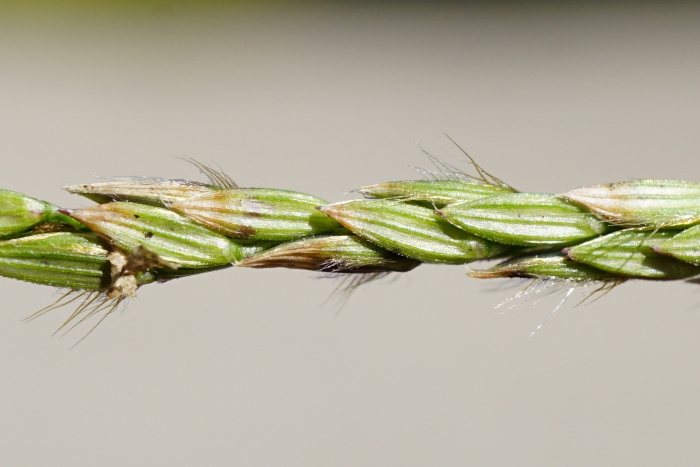Hairy Crabgrass
(Digitaria sanguinalis)
Hairy Crabgrass (Digitaria sanguinalis)
/
/

Patrick Hacker
CC BY 4.0
Image By:
Patrick Hacker
Recorded By:
Copyright:
CC BY 4.0
Copyright Notice:
Photo by: Patrick Hacker | License Type: CC BY 4.0 | License URL: http://creativecommons.org/licenses/by/4.0/ | Rights Holder: Patrick Hacker | Publisher: iNaturalist | Date Created: 2021-09-04T10:51:56-07:00 |























Estimated Native Range
Summary
Digitaria sanguinalis, commonly known as hairy crabgrass or purple crabgrass, is an annual grass that is native to temperate regions of Eurasia. It has a prostrate or ascending growth habit and can reach up to 35 inches in height. This species thrives in open areas such as fields, roadsides, and disturbed sites, often outcompeting native vegetation. It is characterized by its hairy leaves and stems, and inflorescences consisting of long, thin branches lined with tiny spikelets that are often reddish or purplish in color. The flowering season typically occurs in late summer.
Hairy crabgrass is appreciated for its high nutritional value for livestock and wildlife. It was historically cultivated as a grain in Eastern Europe. In cultivation, it prefers full sun and can tolerate a wide range of soil types, although it thrives in moist, fertile soils. It is often found in lawns, gardens, and agricultural fields, where it can be considered a weed due to its aggressive growth and ability to spread rapidly. Despite its invasive potential, it can be used for erosion control and as a temporary cover crop. Gardeners should be cautious, as it can become invasive outside its native range, and its prolific seed production can lead to it dominating spaces quickly.CC BY-SA 4.0
Hairy crabgrass is appreciated for its high nutritional value for livestock and wildlife. It was historically cultivated as a grain in Eastern Europe. In cultivation, it prefers full sun and can tolerate a wide range of soil types, although it thrives in moist, fertile soils. It is often found in lawns, gardens, and agricultural fields, where it can be considered a weed due to its aggressive growth and ability to spread rapidly. Despite its invasive potential, it can be used for erosion control and as a temporary cover crop. Gardeners should be cautious, as it can become invasive outside its native range, and its prolific seed production can lead to it dominating spaces quickly.CC BY-SA 4.0
Plant Description
- Plant Type: Grass
- Height: 0.5-2.5 feet
- Width: 1-2 feet
- Growth Rate: Rapid
- Flower Color: N/A
- Flowering Season: Fall
- Leaf Retention:
Growth Requirements
- Sun: Full Sun
- Water: Medium
- Drainage: Medium
Common Uses
Erosion Control, Low Maintenance
Natural Habitat
Native to temperate regions of Eurasia
Other Names
Common Names: Hairy Crabgrass, Summer Grass, Crab-Grass, Hairy Finger-Grass, Large Crabgrass
Scientific Names: , Digitaria sanguinalis, Asperella digitaria, Cynodon praecox, Dactilon sanguinale, Dactylon sanguinale, Digitaria aegyptiaca, Digitaria aegyptiaca subsp. caucasica, Digitaria australis, Digitaria australis
GBIF Accepted Name: